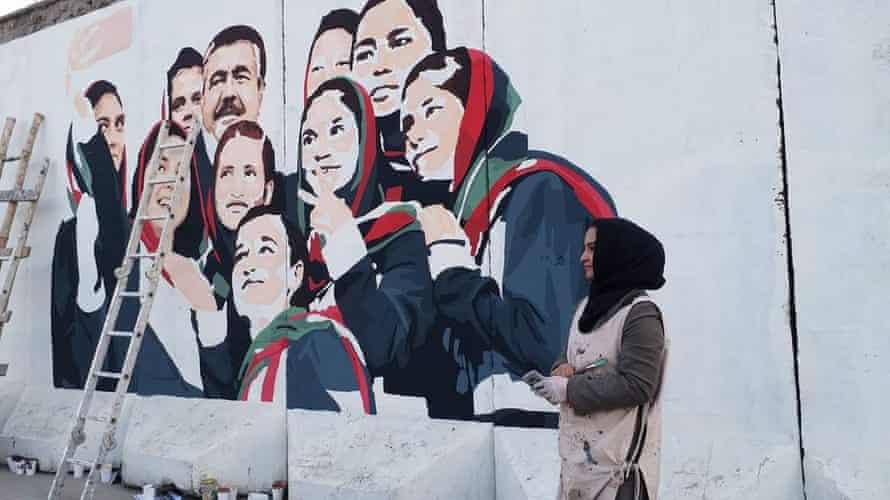Negina Azimi felt shock and fear like never before when she heard that Taliban fighters had entered Kabul on 15 August. As an outspoken female artist in Afghanistan, she knew they would come for her.
“We heard reports that the Taliban might raid houses. I was scared because I live in a very central neighbourhood and every room in my house is adorned with the kind of art the Taliban won’t approve of,” she says, referring to paintings that feature messages about women’s empowerment and are critical of the Taliban’s atrocities.
Azimi rushed home from the studio where she worked, ArtLords, and took down all her work, carefully stashing the paintings away in places where she hoped they could not be found. “But so much of our work is outside on the walls of the city, and everyone knows us,” she says, referring to the ArtLords’ initiative of painting murals on the thick concrete anti-blast walls that cover most of the war-ravaged capital. “We heard that the Taliban enquired about us to the shopkeepers and asked for our addresses. They wanted to punish us.”

Azimi was one of a number of artists who made it on to an evacuation flight in the days that followed, leaving behind years of hard work and efforts to revive the Afghan art scene. From exile in refugee camps in Europe, they have watched online as the Taliban erased their murals, one after another. The hardliners had painted over many ArtLords images and replaced them with the words, Ham Watan Azadet Mubarak – a message congratulating the citizens on their “freedom”.
“I can’t express how hurt I felt when I saw on social media that the Taliban had whitewashed the mural of the Afghan women’s orchestra; it was my first piece with ArtLords,” she says.
Read full report on The Guardian
